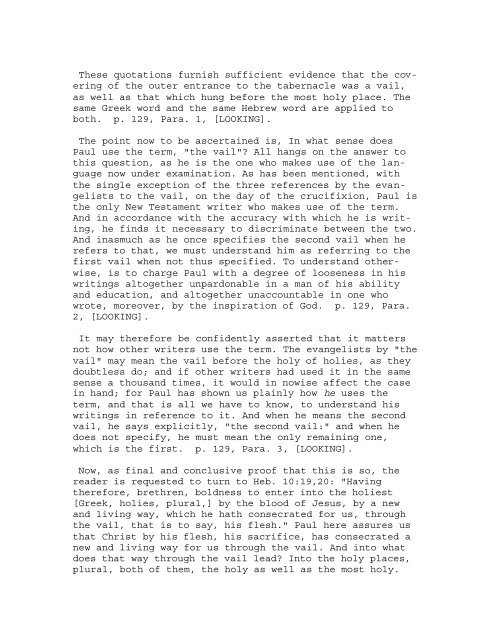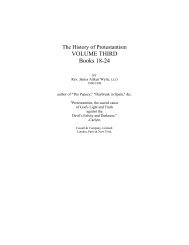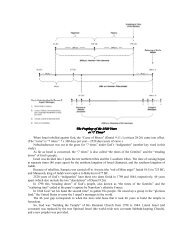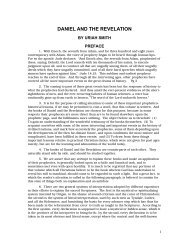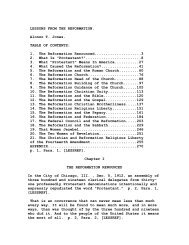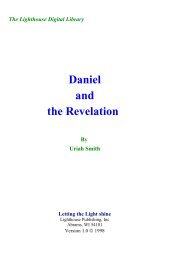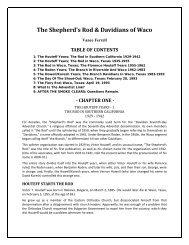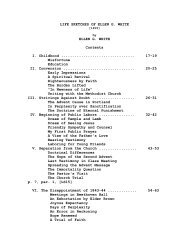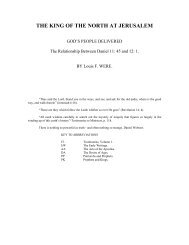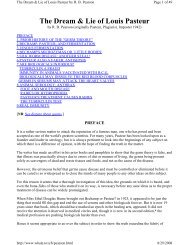LOOKING UNTO JESUS OR CHRIST IN TYPE AND ANTITYPE. BY ...
LOOKING UNTO JESUS OR CHRIST IN TYPE AND ANTITYPE. BY ...
LOOKING UNTO JESUS OR CHRIST IN TYPE AND ANTITYPE. BY ...
You also want an ePaper? Increase the reach of your titles
YUMPU automatically turns print PDFs into web optimized ePapers that Google loves.
These quotations furnish sufficient evidence that the covering<br />
of the outer entrance to the tabernacle was a vail,<br />
as well as that which hung before the most holy place. The<br />
same Greek word and the same Hebrew word are applied to<br />
both. p. 129, Para. 1, [<strong>LOOK<strong>IN</strong>G</strong>].<br />
The point now to be ascertained is, In what sense does<br />
Paul use the term, "the vail"? All hangs on the answer to<br />
this question, as he is the one who makes use of the language<br />
now under examination. As has been mentioned, with<br />
the single exception of the three references by the evangelists<br />
to the vail, on the day of the crucifixion, Paul is<br />
the only New Testament writer who makes use of the term.<br />
And in accordance with the accuracy with which he is writing,<br />
he finds it necessary to discriminate between the two.<br />
And inasmuch as he once specifies the second vail when he<br />
refers to that, we must understand him as referring to the<br />
first vail when not thus specified. To understand otherwise,<br />
is to charge Paul with a degree of looseness in his<br />
writings altogether unpardonable in a man of his ability<br />
and education, and altogether unaccountable in one who<br />
wrote, moreover, by the inspiration of God. p. 129, Para.<br />
2, [<strong>LOOK<strong>IN</strong>G</strong>].<br />
It may therefore be confidently asserted that it matters<br />
not how other writers use the term. The evangelists by "the<br />
vail" may mean the vail before the holy of holies, as they<br />
doubtless do; and if other writers had used it in the same<br />
sense a thousand times, it would in nowise affect the case<br />
in hand; for Paul has shown us plainly how he uses the<br />
term, and that is all we have to know, to understand his<br />
writings in reference to it. And when he means the second<br />
vail, he says explicitly, "the second vail:" and when he<br />
does not specify, he must mean the only remaining one,<br />
which is the first. p. 129, Para. 3, [<strong>LOOK<strong>IN</strong>G</strong>].<br />
Now, as final and conclusive proof that this is so, the<br />
reader is requested to turn to Heb. 10:19,20: "Having<br />
therefore, brethren, boldness to enter into the holiest<br />
[Greek, holies, plural,] by the blood of Jesus, by a new<br />
and living way, which he hath consecrated for us, through<br />
the vail, that is to say, his flesh." Paul here assures us<br />
that Christ by his flesh, his sacrifice, has consecrated a<br />
new and living way for us through the vail. And into what<br />
does that way through the vail lead? Into the holy places,<br />
plural, both of them, the holy as well as the most holy.


